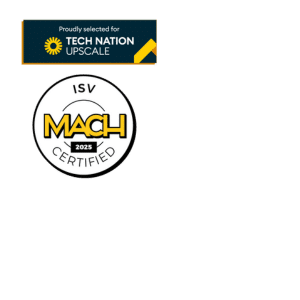What is a Product Lifecycle?
Product lifecycle refers to the stages a product goes through from its conception and development to its eventual decline and discontinuation in the market. It typically includes phases such as introduction, growth, maturity, and decline, each with distinct characteristics that influence marketing strategies and business decisions.
In-Depth Explanation of a Product Lifecycle
Why It Matters
Understanding the product lifecycle is crucial for eCommerce businesses to make informed decisions about product development, marketing strategies, and resource allocation. By recognizing which stage a product is in, companies can optimize their efforts to maximize profits and maintain a competitive edge. This knowledge allows businesses to anticipate market changes and adapt their approaches accordingly, ensuring long-term success in the ever-evolving online marketplace.
How It Works
The product lifecycle typically consists of four main stages: introduction, growth, maturity, and decline. In the introduction stage, a new product is launched, and marketing efforts focus on creating awareness and attracting early adopters. During the growth stage, sales increase rapidly as the product gains popularity. The maturity stage is characterized by slowing growth and increased competition, requiring businesses to differentiate their offerings. Finally, the decline stage sees decreasing sales and potential obsolescence, prompting decisions about product updates or discontinuation.
Key Benefits
By leveraging product lifecycle insights, eCommerce businesses can optimize their inventory management, pricing strategies, and marketing efforts. This understanding enables companies to allocate resources more effectively, focusing on products in growth stages while strategically managing those in decline. Additionally, recognizing lifecycle stages helps businesses identify opportunities for product improvements or line extensions, ensuring a continuous stream of offerings that meet evolving customer needs and maintain market relevance.
Relevant Stats or Facts
Research shows that the average product lifecycle in the eCommerce industry has shortened significantly in recent years, with some estimates suggesting a reduction of up to 50% compared to a decade ago. This trend highlights the importance of agile product management and continuous innovation.
Importance of the Product Lifecycle
Understanding the product lifecycle is crucial for businesses in the United States, especially those involved in product data management and eCommerce. By recognizing the different stages a product goes through, companies can make informed decisions about resource allocation, marketing strategies, and inventory management. This knowledge enables businesses to maximize profits and minimize losses throughout a product’s lifespan, from its introduction to the market until its eventual decline.
For product data management professionals, the product lifecycle provides a framework for organizing and updating information as products evolve. This allows them to maintain accurate and relevant data at each stage, ensuring that customers have access to the most current information. In the eCommerce realm, understanding the product lifecycle helps businesses anticipate changes in demand and adjust their online presence accordingly. For example, they can optimize product listings, adjust pricing strategies, and plan promotional campaigns based on where a product is in its lifecycle.
Moreover, the product lifecycle concept helps businesses stay competitive in the fast paced American market. By recognizing when a product is nearing the end of its lifecycle, companies can proactively develop new products or improve existing ones to meet changing consumer needs. This forward thinking approach allows businesses to maintain a strong market position and avoid becoming obsolete. Additionally, understanding the product lifecycle enables companies to make more accurate financial projections and better manage their resources, leading to improved overall business performance and sustainability.
Related Terms
Examples of Product Lifecycles
Fashion/Apparel Retailer:
For a fashion and apparel retailer, the product lifecycle is crucial for managing trends and inventory. As trends are often seasonal, each collection has a distinct life stage: introduction, growth, maturity, and decline. During the introduction phase, marketing focuses on creating buzz and driving initial interest. As the collection grows, demand increases, requiring efficient inventory management. However, as the season changes and the products reach maturity, the retailer needs to manage markdowns and clearance sales to clear out old stock before the decline stage, where new collections start taking precedence.
HVAC Manufacturer:
In the HVAC industry, the product lifecycle often spans several years due to the durable nature of the products and substantial investment from consumers. For an HVAC manufacturer, the introduction phase may involve launching a new energy-efficient model that complies with updated regulations. As it enters the growth stage, the focus shifts to expanding market reach and optimizing production. During maturity, the model might undergo minor updates but generally faces increased competition. Finally, in the decline phase, technological advancements push for innovation, leading the manufacturer to phase out older models in favor of newer, more advanced systems.
Distributor of Auto Parts:
A distributor of auto parts, like brake pads or filters, experiences a dynamic product lifecycle based on car model changes and consumer demand. As new car models are introduced, distributors must ensure they have compatible parts ready, marking the introduction phase. Growth follows as these new parts penetrate the market, requiring efficient supply chain management to meet increasing demand. As cars age and reach peak sales, associated parts mature with steady demand. Eventually, as car models phase out, demand for their parts declines, requiring the distributor to adjust focus to newer models and possibly diverse part categories to sustain profitability.
Brand Owner of Homewares Products:
For a brand owner of homewares products primarily selling on marketplaces and retailers like Walmart and Wayfair, the product lifecycle is often driven by consumer trends and platform algorithms. Initially, a newly designed product is introduced via targeted ads and strategic listings to capture consumer interest. As product visibility increases, positive reviews and ratings help drive growth and establish the product on high-traffic platforms. Maintaining maturity requires constant monitoring and optimization of listings based on consumer feedback and platform guidelines. Eventually, when sales decline due to market saturation or evolving consumer preferences, new product lines must be developed to replace outdated offerings and sustain market presence.
Synonyms
Common synonyms for “Product Lifecycle” include:
- Product Journey
- Product Development Cycle
- Product Roadmap
- Product Timeline
Product Lifecycle and PIM
Product Lifecycle refers to the journey a product takes from its conception to its eventual discontinuation. This process typically includes several stages such as development, introduction, growth, maturity, and decline. Each stage presents unique challenges and opportunities for businesses in managing their product information. Understanding and effectively managing the product lifecycle is crucial for companies to maximize their products’ potential and maintain a competitive edge in the market.
Product Information Management (PIM) solutions play a vital role throughout the product lifecycle by centralizing and streamlining the management of product data. In the development stage, PIM systems help organize and store essential product information, specifications, and attributes. During the introduction phase, these solutions facilitate the rapid dissemination of accurate product details across various sales channels, ensuring consistency and completeness of information. As products enter the growth and maturity stages, PIM tools enable businesses to easily update and enrich product data, add new variants, and manage inventory across multiple platforms.
PIM solutions become particularly valuable in the later stages of the product lifecycle. For instance, during the maturity phase, businesses can use PIM to optimize product listings, update pricing strategies, and manage promotions to maintain sales momentum. In the decline stage, PIM systems help companies efficiently manage product phase-outs, clearance sales, and the transition to newer product lines. By leveraging PIM throughout the product lifecycle, businesses can ensure that their product information remains accurate, up to date, and aligned with changing market demands, ultimately supporting better decision-making and improved customer experiences.
Frequently Asked Questions
What are the stages of a product lifecycle?
The product lifecycle typically consists of four main stages: introduction, growth, maturity, and decline. During the introduction stage, the product is launched and marketing efforts focus on creating awareness. The growth stage sees increasing sales and market share. In the maturity stage, sales peak and competition intensifies. Finally, the decline stage occurs when sales decrease and the product may be phased out or repositioned. Understanding these stages helps businesses make informed decisions about product development, marketing strategies, and resource allocation.
What are the key performance indicators for each stage of the product lifecycle?
Key performance indicators (KPIs) vary across the product lifecycle stages. In the introduction stage, important KPIs include market awareness, customer acquisition cost, and initial sales volume. During the growth stage, businesses should focus on market share growth, revenue increase, and customer retention rates. Maturity stage KPIs often include profit margins, market share stability, and customer loyalty metrics. In the decline stage, KPIs may shift to inventory turnover, cost reduction, and the success of repositioning efforts. Monitoring these KPIs helps businesses gauge product performance and make data-driven decisions throughout the lifecycle.
How does understanding the product lifecycle impact inventory management?
Understanding the product lifecycle is crucial for effective inventory management. In the introduction stage, businesses may need to carefully manage stock levels to avoid over investment in unproven products. During the growth stage, inventory levels typically increase to meet rising demand. In the maturity stage, inventory management focuses on optimizing stock levels and reducing carrying costs. As the product enters decline, businesses must carefully manage inventory to prevent obsolescence and excess stock. By aligning inventory strategies with each lifecycle stage, companies can improve cash flow, reduce waste, and maintain appropriate stock levels to meet customer demand.
How can businesses use product lifecycle data to inform their marketing strategies?
Product lifecycle data can significantly influence marketing strategies. In the introduction stage, marketing efforts focus on creating awareness and educating customers about the product’s benefits. During growth, marketing strategies may shift towards differentiation and building brand loyalty. In the maturity stage, marketing often emphasizes product features and competitive advantages to maintain market share. As the product declines, marketing efforts may focus on targeting niche markets or promoting clearance sales. By analyzing lifecycle data, businesses can tailor their marketing messages, channel selection, and budget allocation to maximize effectiveness at each stage and optimize return on investment.
How can I audit my website for missing or poor alt text?
There are several ways to check your website for alt text issues. Use automated tools like web accessibility checkers or SEO analyzers that can scan your site and flag missing or inadequate alt text. Manual reviews are also important, as they allow you to assess the quality and relevance of existing alt text. Regularly review your product images and content updates to ensure new additions have appropriate alt text. Consider involving team members with different perspectives to help identify areas for improvement and maintain consistency across your site.







